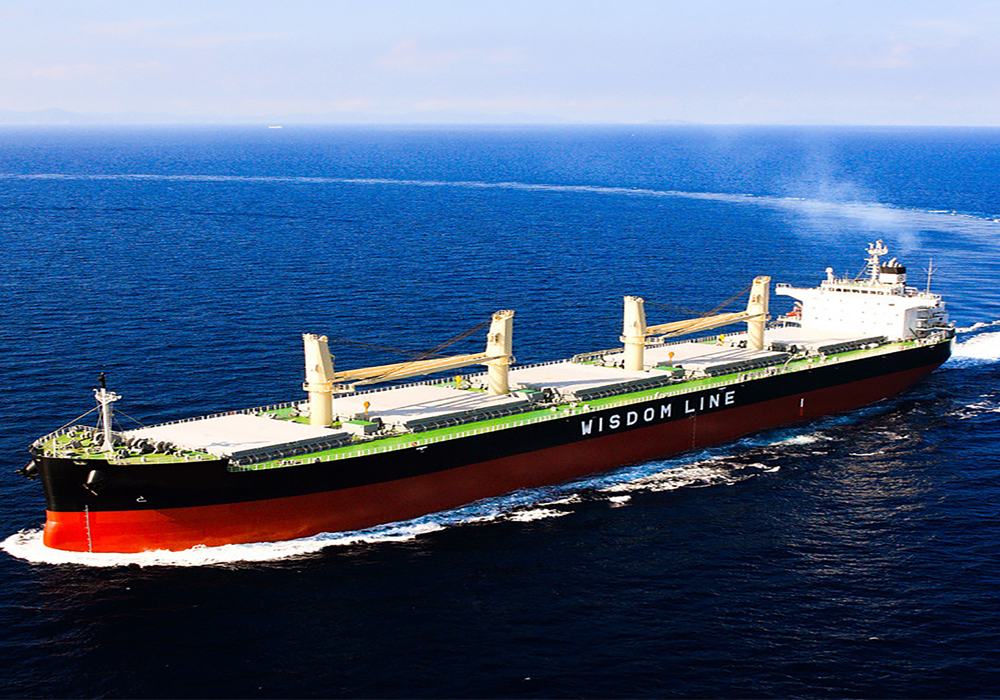Introduction
Since its inauguration in 1869, Suez Canal has served as a super-efficient trade route connecting the Mediterranean Sea and the Red Sea. In this article, we try to explore some less-known facts about the Suez Canal that will leave you in awe of this architectural wonder.
But before we dive right in (pun intended), let’s get the basics out of the way.
What is the Suez Canal?
The Suez Canal is a waterway that connects the Atlantic Ocean to the Indian Ocean through the Mediterranean and Red Sea respectively. As a result, the Suez Canal provides a shortcut when travelling between Europe and Asia by sea route. Map of the Suez Canal
Suez Canal Map.
Prior to the canal being built, ships would circumnavigate Africa to connect goods between Asia and Europe. The construction of the canal cut down the travel time and the costs involved by a huge margin gaining widespread popularity. A typical journey between the Middle East and Europe would add 5000 nautical miles or about 9000 kilometres when going around the Cape of Good Hope.
Over the years, the number of vessels transiting the Suez Canal has increased manifold with the largest traffic in a year registered in 2022 at (23000+) raking in $7.9 billion for the Egyptian government.
Who built the Suez Canal?
The Suez Canal was built as a joint enterprise between the French and the Ottoman Empire. Ferdinand de Lesseps, a French diplomat, put the plan into motion in 1854 by using his good relationship with Sa’id Pasha, the viceroy of the Ottoman Empire for Egypt and Sudan. Ferdinand de Lesseps and Mohamed Sa'id Pasha
After about four years of preparation, Ferdinand de Lesseps formed the Suez Canal Company in 1858. The construction began in 1859 and took ten years to complete. The canal, at first, was dug by hand and is estimated to have employed over 1.5 million people over the course of its construction. The canal officially opened in August 1869 and has been in operation since.
Opening of the Suez Canal on November 17, 1869.
Woodcut engraving, published in 1880. In addition to the canal, several towns were also established to house employees and provide port-related facilities throughout the canal. This includes Port Said and Port Fuad at the canal north and Ismailia around the middle and Port Twefik at the canal south.
Eye-opening facts about the Suez Canal
Fact #1: The history of the Suez Canal goes back 40 centuries.
Egypt has been the centre of many large-scale experiments throughout history. As early as 1850 B.C., the Egyptian Pharaoh Senusret III may have built the first canal joining the Nile River to the Red Sea.
This canal went east-west from the Red Sea to the Nile River. Thus, any ships travelling between the Mediterranean and Red Sea would have to travel through the desert to the Nile to go to the Mediterranean.
Canal built by Senusret III Canal of the Pharaohs joining the Red Sea to the Nile River – – – by Annie brocolie (original), CC BY-SA 2.5 , via Wikimedia Commons The Pharaoh Necho II as well as the Persian Conqueror Darius are said to have started and abandoned work on a similar project. Popular historical figures such as Cleopatra may have used the Canal of the Pharaohs as a waterway through the desert. Fact #2: Napoleon Bonaparte wanted to build the Suez Canal Upon the conquest of Egypt in 1798, Napoleon Bonaparte considered the idea of joining the Mediterranean and the Red Sea through a canal. This was after his engineers discovered the drawings of an ancient canal. However, the surveyors came back with the fact that there was a significant height difference between the Red Sea and the Mediterranean Sea and any attempt to join the two through the Isthmus of Suez could result in a disastrous flooding of Egypt. These calculations were later revealed to be wrong but at the time, they were sufficient to stop Napoleon from pursuing the idea any further. Fact #3: First artificial sea-level waterway in the world The Suez Canal is the first artificially built sea-level waterway at such a monumental scale. When the original canal was first constructed, its length was 164 km with a depth of 8 m. The workers used hand tools in the excavation of the Suez Canal in the beginning. By the end of its construction, workers had moved more than 75 million cubic metres of land mass. Vintage engraving from 1878 showing The Suez Canal with Dredges at Work The canal was constructed using forced labour at first. But after it was banned in 1863, Ferdinand de Lesseps turned to the use of steam-powered machinery to complete the project. Over the years, further developments have modified the length to 193 km, about 24 m deep and 205 m wide. Each turn is also carefully constructed to at least have a radius of 5000 m. Fact#4: Massive number of deaths during construction The project was so massive that at least 30000 workers were working on the Suez Canal at all times. A total of 1.5 million people from different nationalities are said to have worked on its construction. Such a high concentration of people in a small area with limited access to healthcare and other basic needs contributed to thousands of deaths in the form of epidemics. Gamal Abdel Nasser, during his nationalization speech, announced that as many as 120,000 workers had died during the construction. One set of records shows that the number was close to 3000 while yet another set of records puts the number at less than 1000. But the actual number is most likely to be in the tens of thousands. Fact #5: The British Government was opposed to Suez Canal Construction When the idea of Suez Canal was first floated, the British government was opposed. At the time, they were in complete control of sea and overland routes between Europe and Asia and the Suez Canal would challenge that status quo. Lord Palmerston, who was the British Prime Minister from 1858 to 1865, believed that the canal posed a genuine threat to the economy of Great Britain. He feared that the Empire would lose the India trade the same way as the Venetians did when the European nations undersold Venetian traders despite circumnavigating the Cape of Good Hope. However, the British Empire would go on to purchase Egypt’s shares of the Suez Canal (44%) in 1875. France would remain the majority shareholder. Fact #6: Spate of early ship groundings The Suez Canal witnessed thousands of incidents of ships running aground within the first 15 years of operation. From 1870 to 1884, the Suez Canal saw nearly 3000 ships get stranded within the canal as it wasn’t wide or deep enough in some spots. Such a high frequency of incidents brought on improvement projects focused on widening and deepening the canal starting from 1876 itself. Today, the frequency of incidents has reduced significantly. Out of the 75 incidents reported over the course of a decade (between 2010 and 2019), only 25 were grounding incidents. Fact #7: Wars have occurred over Suez Canal While Egypt gained independence from the British in 1922, Britain continued to maintain a military presence in the canal. Tensions finally reached a tipping point in July 1956 when the then Egyptian President Gamal Abdel Nasser nationalized the Suez Canal. The decision elicited a major reaction from Israel, UK and France as they launched a tripartite aggression against Egypt to regain control of the Suez Canal for the West and remove Gamal Abdel Nasser from power. This struggle, known as the Suez crisis (or the Suez Canal Crisis) lead to massive losses on the Egyptian front. But before being defeated, the Egyptian forces sunk 40 ships in the canal rendering it useless. The three aggressors had to retreat in humiliation and this point is often considered as the start of the downfall of the British Empire as one of the superpowers. Fact #8: The canal was closed for precisely 8 years from 1967-1975 Following the Six Day War (3rd Arab Israeli War) that started on 5 June 1967, Egypt closed the Suez Canal for 8 years. The decision affected the global oil trade severely and set off the energy crisis of the 1970s and the oil crisis of 1973. Only once the debris and the mines were cleared by the authorities did they reopen the canal on 5 June, 1975. Fact #9: The longest time that ships were stuck in the Suez Canal is 8 years When the aforementioned Six Day War broke out, fourteen ships that were transiting the Suez Canal were instructed by Egyptian authorities to anchor in the widest part of the Suez Canal’s Great Bitter Lake. But since Egypt blocked the Suez Canal with scuttled ships and mines during the war, the ships could not exit the Suez Canal and stayed in it through the duration of the closure. The fourteen ships belonged to Bulgaria, Poland, Czechoslovakia, France, Germany, Poland, Sweden, the United Kingdom and the United States. Since the ship owners didn’t want to lose the precious cargo onboard, they kept rotating the crew onboard until the canal was finally opened in 1975. But by then, twelve vessels were no longer capable of propulsion and had to be towed out. A total of 3000 crew members manned the ships between 1967 and 1975. The fleet of ships came to be known as the Yellow Fleet because of the sand that coated the ships as they sat stuck for eight years. Fact #10: The Suez Canal received a major update in 2015 To increase the capacity of the canal, the Suez Canal Authority undertook the building of a second canal parallel to the original one to facilitate two way transit through it. The work began in 2014 and finished one year later. Suez Canal expansion that began in 2014 and completed in 2015 The new canal allowed the transit of modern tankers in both directions which was not possible before. widening of the Ballah bypass would also speed up the canal’s transit time. The expansion was estimated to increase the number of ships passing through the canal from 49 to 97 ships per day and add $7.5 billion dollars to the canal’s annual revenue. A total of US$9 billion dollars were spent on this project. Fact #11: A blocked ship caused a major crisis in 2021 The 400-metre-long Ever Given ran aground in the Suez Canal after being pushed perpendicular to the canal by strong winds. The incident caused rippling disruptions in supply chains as the Suez Canal is responsible for the passage of $10 billion worth of goods every day. The blockade resulted in the accumulation of over 100 ships on each end of the canal. The Container vessel EverGiven blocked the Suez Canal in March 2021 The incident caused major economic losses in transit fees, waterway damage and salvage operations to the Suez Canal Authority which subsequently demanded a US$900 million fine to cover the same. Upon extensive negotiations, the amount was bargained down to US$550 million and the ship was allowed to depart.













